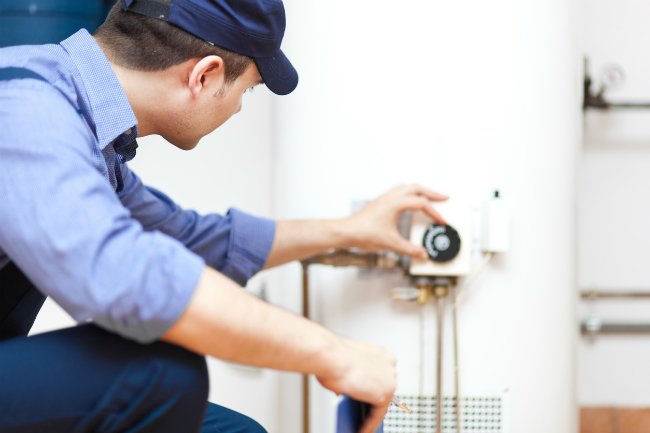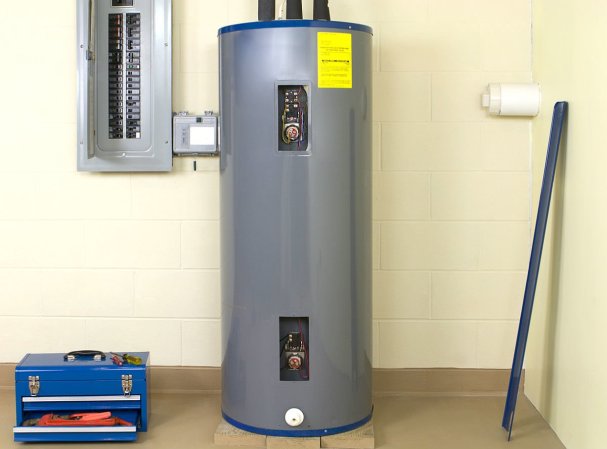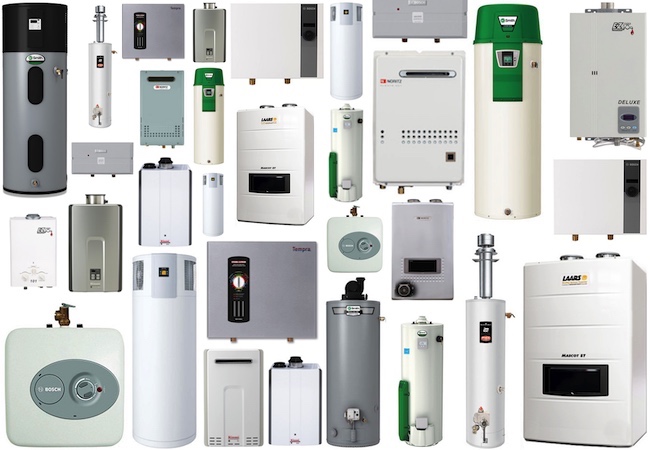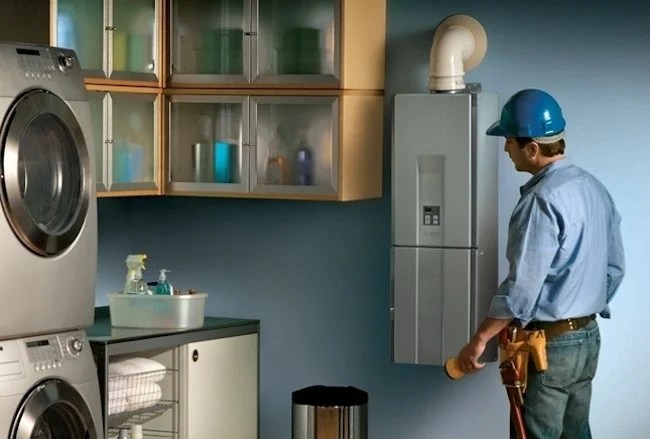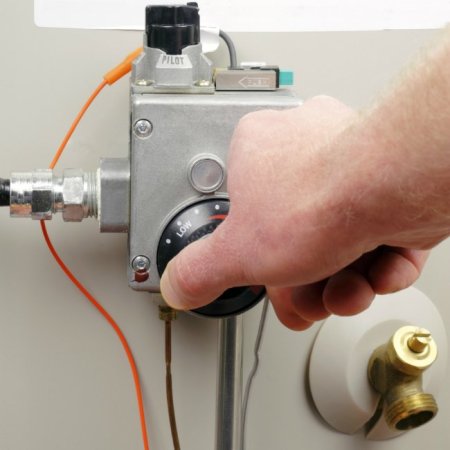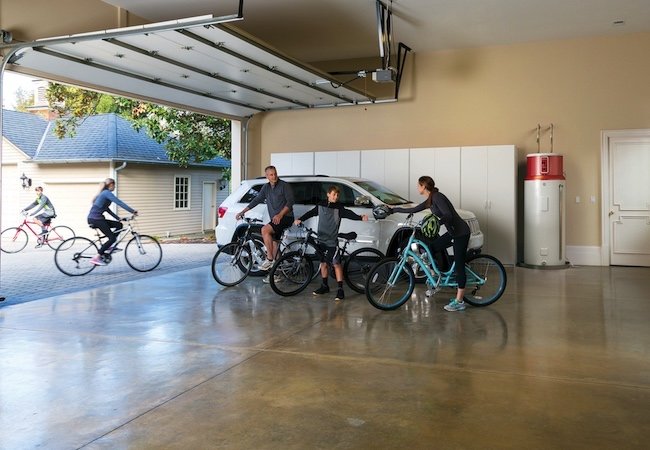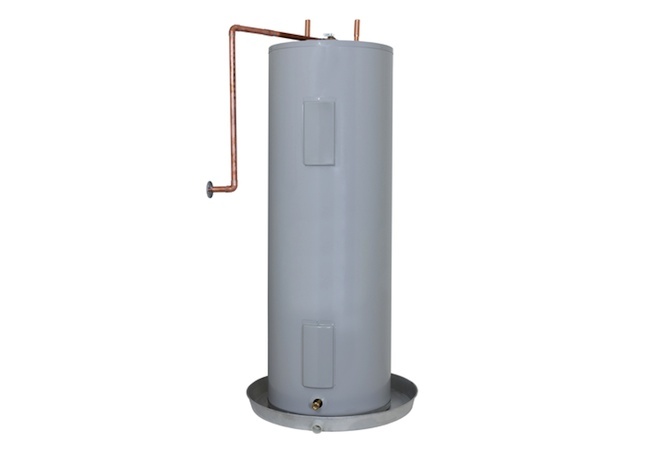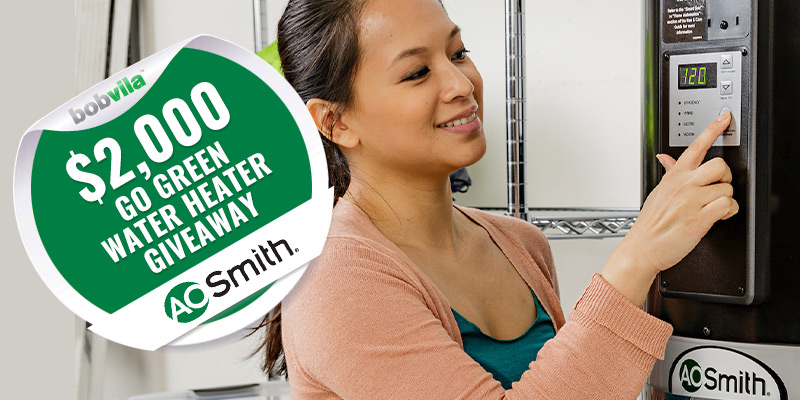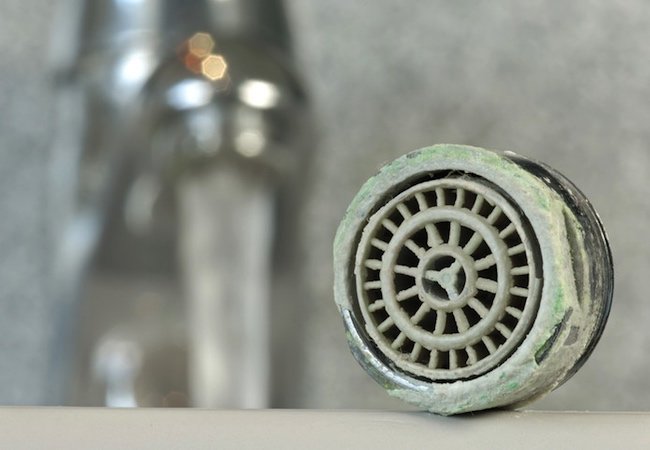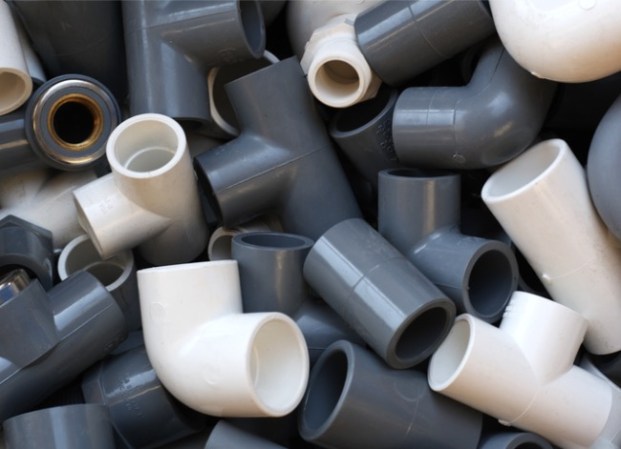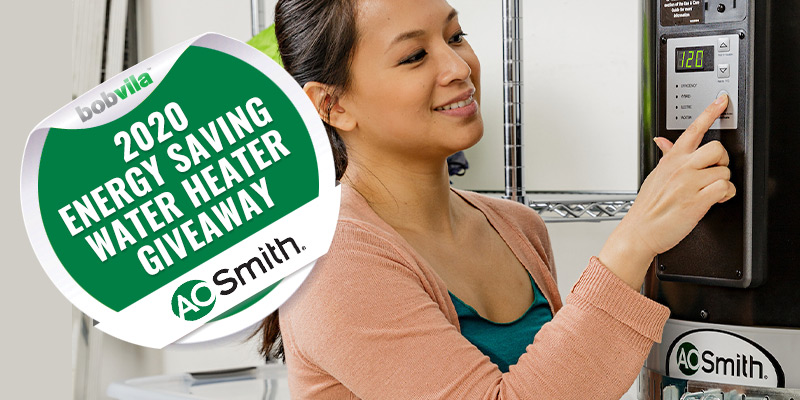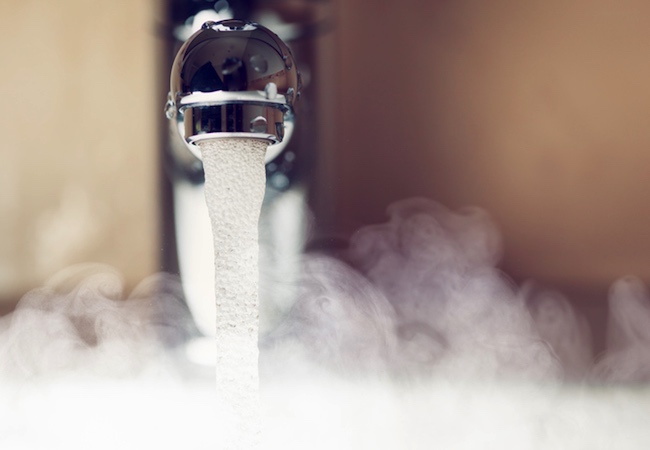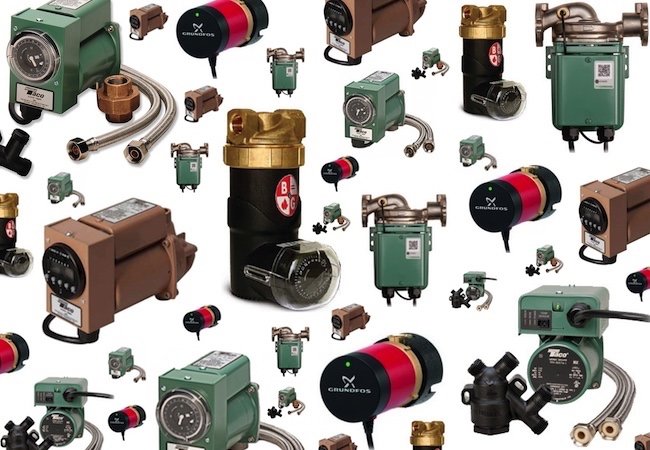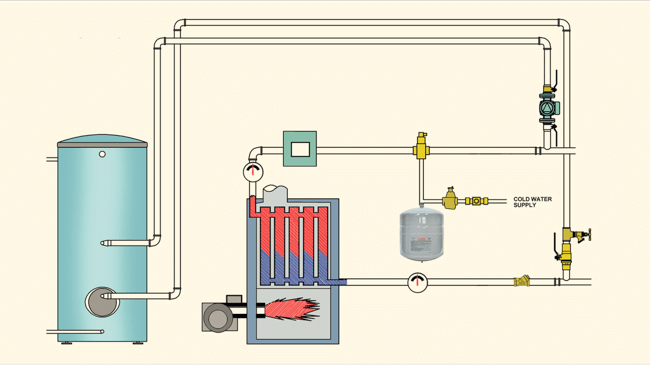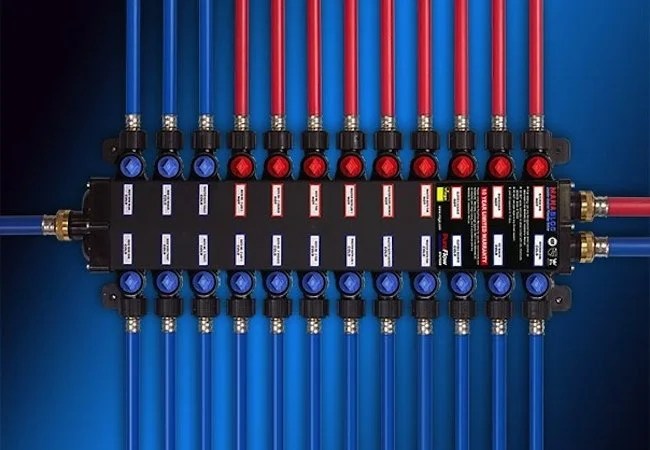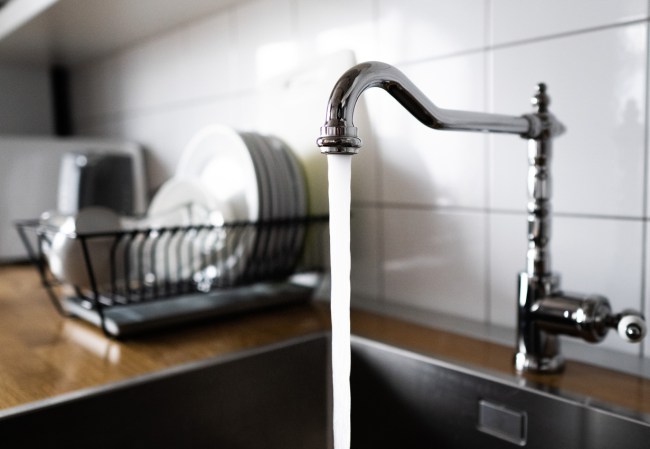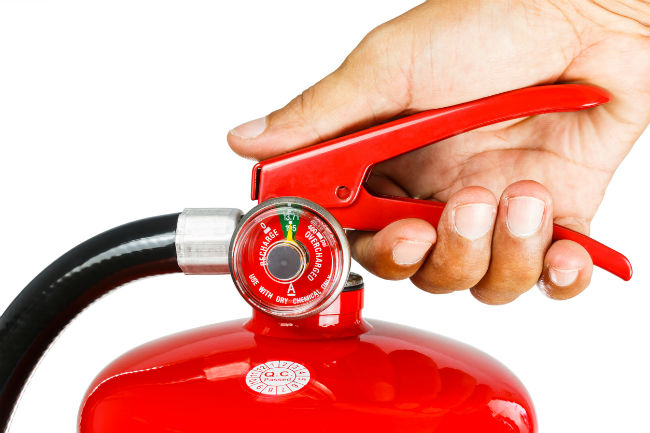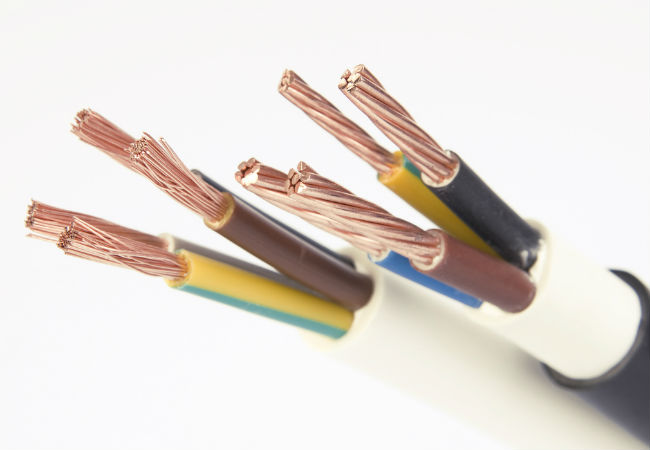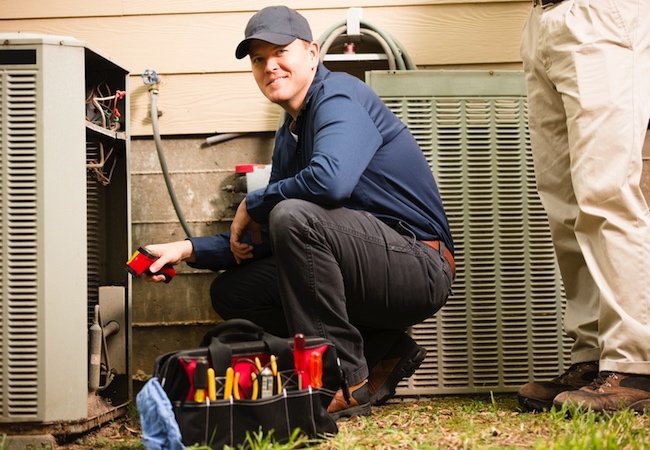We may earn revenue from the products available on this page and participate in affiliate programs. Learn More ›
Q. We just bought a house, and the previous owners told us that the water heater is about 6 years old. Does that mean we’ll have to replace it soon? How long do water heaters last?
A. As long as it’s still heating water sufficiently, without leaks or strange noises, you might get a few more years of service from it. A water heater’s useful life varies, depending on the type of water heater, the quality of the unit, and how well it’s been maintained. A policy from one of the best home warranty companies for plumbing (like American Home Shield) can help pay to repair or replace aging water heaters that break down due to normal wear and tear.
If you’re wondering, “How long do water heaters last?” keep reading to find out the signs of aging and what to consider when planning to update an old water heater.
A Water Heater’s Life Expectancy
There are many factors that affect a water hexater’s life expectancy. In addition to its age and whether it receives regular maintenance, the quality of the water and the levels of regular usage also affect the water heater lifespan. While a water heater may be able to outlast average estimates, there are expectations for how long a water heater will last based on type.
A traditional tank-type water heater lasts an average of 8 to 12 years.
Inside the tank, an anode rod protects the interior lining by attracting all corrosive particles to itself through a process called electrolysis. When the rod has corroded to such an extent that it can no longer do its job, those particles settle at the bottom of the water tank, where they may eventually destroy the lining. Once corrosion starts inside the tank, the water heater has entered into its final stage of life.
RELATED: Best Water Heaters for Homeowners
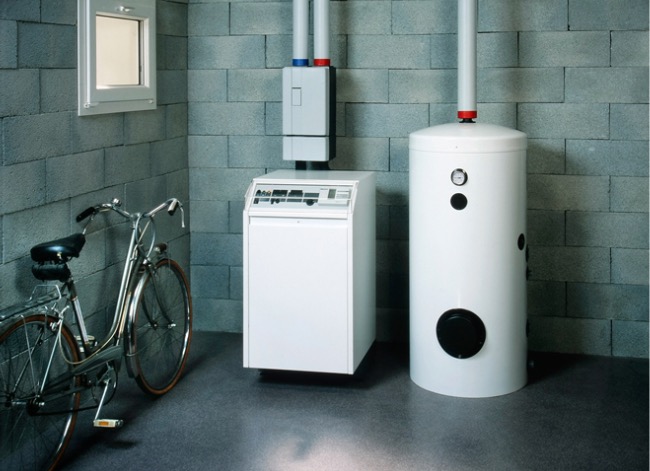
A tankless water heater can last up to 20 years, sometimes even longer.
Also called “on-demand” water heaters, these appliances do not work continuously to maintain a supply of hot water—and, as a result, they last longer than their tank-style counterparts. Eventually, though, tankless water heaters (which do not use anode rods) may also suffer from corrosion and require replacement.
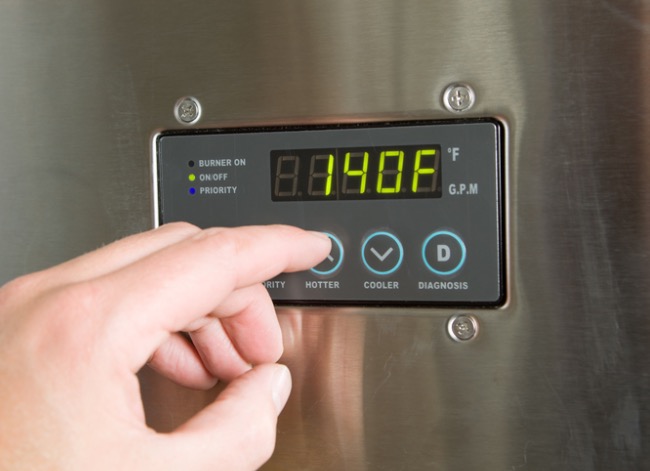
Your existing water heater’s serial number holds the clue to its age.
Even if you can’t track down the documentation for your current appliance, you can examine the serial number, which consists of a letter followed by a series of numbers, located on the upper portion of the water heater to determine when it was manufactured.
Typically, the letter stands for the month—“A” for January, “B” for February, and so on, through “L” for December—and the next two numbers indicate the year it was made. A serial number that leads with “A10,” for example, was manufactured in January 2010. This rule of thumb applies to most hot water heater manufacturers, but you can confirm this on the company’s website if you have any doubts.
RELATED: Choosing a New Appliance: Gas vs. Electric Water Heaters
Signs Your Water Heater Might Be on Its Last Legs
More than just maintaining your water heater according to the manufacturer’s instructions, it’s important to regularly check the performance of a hot water heater to make sure it’s performing optimally. Even though all appliances have an average lifespan that’s based on typical use, it’s a good idea to start shopping for a replacement if you notice any of the following signs.
- A banging or rumbling noise often occurs near the end of a water heater’s lifespan. While manufacturers recommend annual flushing of a tank-style water heater—and it’s a requirement for keeping a warranty in effect—few people actually follow that suggestion, so calcium buildup from hard water collects in the bottom of the tank. The sediment builds, hardens, and eventually forms a thick crust that can cause the water heater to creak and bang when in use.
- The hot water smells odd. If there is a weird smell or taste to the hot water, then something may be contaminating the water tank. It could be metal that’s absorbed in the water, or it could be bacteria collecting inside the tank. If cleaning the tank doesn’t solve the problem, it may be time to call a plumber.
- Tinted hot water, either red or dirty yellow, coming from any faucet could mean rust. It’s important to determine whether the discoloration also appears when the cold water is running. If not, a corrosion problem probably originates inside the water heater rather than within any rusting galvanized piping.
- A drop in water temperature may happen. If water doesn’t heat up as much as it used to or it doesn’t stay at the desired temperature for as long, the water heater may be nearing the end of its service life.
- There’s less hot water than there used to be. Buildup of sediment can happen inside the water tank over time and decrease the space inside the tank for water. If the hot water is running out quicker, the tank may need to be drained and cleaned. Waiting too long to clean the tank may force a replacement.
- Water pooling around the base of a water heater tank also suggests bad news. First, check to make sure the leak isn’t coming from a fitting or valve that just needs to be tightened or replaced. Call in a professional to check out the problem and perform any necessary maintenance. If you find the leak comes from the tank itself, it may be cracked or corroded internally.
- Hard water is affecting the water quality. Hard water wreaks havoc on a water heater and can reduce its service life by 2 or more years. If you notice white limescale building up on plumbing surfaces, the water heater may need to be replaced more often.
- Location can affect the heater’s lifespan. Water heaters located in garages or crawl spaces, where the temperature drops significantly, have to work harder to heat the water, and they tend to wear out more quickly than units installed in a temperature-controlled house. If either of those elements factor into your setup, start looking for end-of-life warning signs earlier than the manufacturer recommends.
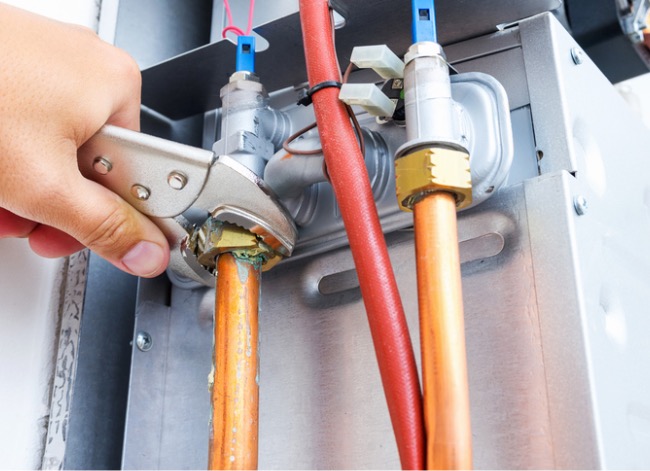
Planning Ahead to Replace a Water Heater
Replacing a hot water heater is not an unusual project, but it does require some essential planning. Depending on whether it’s a standard tank or a specialized electric tankless water heater, lead times for ordering a replacement can vary.
Also, scheduling time with a professional plumber to make the switch when it isn’t an emergency can save on extra installation fees. Most important, knowing the exact hot water heater that’s desired before the current one is at the end of its life can make the process go much more smoothly.
Think 2 years beyond the predicted lifespan of your water heater.
Consider the standard water heater life expectancy for the current model. When a tank-style water heater approaches 8 to 10 years of age, or a tankless water heater approaches 15 to 18 years of age, it’s time to start thinking about replacing it. Not only will this help avoid the annoyance of breakage and the inconvenience of having no hot water, but it also minimizes excess energy consumption.
Take advantage of the energy-saving tech features newer models offer.
After several years of use, either type of water heater is subject to mineral deposits and sediment buildup that can cause it to require more power to heat water, reducing the appliance’s overall efficiency. Install a replacement, though, and the combination of a decade’s worth of technological advances and the new model’s clean interior mean that your utility bill is sure to drop in the months to follow.
Start looking for a new water heater before it’s needed.
Waiting until it’s an emergency or extremely inconvenient can make the process of replacing a water heater more difficult and expensive. If the current water heater is showing signs of aging, start researching the options and talk with a professional about scheduling time for assessment and possible replacement. While it can take just a few days to receive a standard water heater and just a few hours for a professional to replace it, having a plan in place before it breaks will be valuable.
RELATED: Solved! How to Select the Right Water Heater Size
Call the manufacturer if the water heater is still under warranty.
While many issues can signal the end of an aging water heater’s life, if your unit is only a few years old, the problem could be repairable and under warranty. It may be worth calling the manufacturer or a plumber to check the appliance before you invest in a new model. Fixing an older unit will also provide you more time to select its eventual replacement.
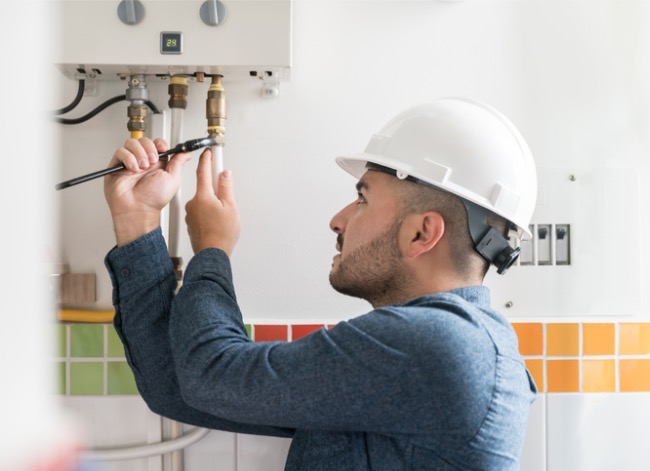
Final Thoughts
Hot water heaters have become essential parts of the modern home, but not actively considered until something goes wrong. Like other functional elements—roof, windows, electricity, and stairs—in a home, it’s important to periodically check on their performance to avoid a potential problem. Knowing the important warning signs that indicate that a hot water heater may need to be replaced soon and what to consider when replacing a hot water heater, can save time, stress, and money.
FAQs About Water Heaters and How Long They Last
Q. How long does it take to install a water heater?
Most professional plumbers can install a water heater in a few hours.
Q. Can a water heater last 30 years?
It is unusual for used water heaters to last 30 years. Most tank water heaters have an average lifespan of 8 to 12 years, and tankless water heaters can last as long as 20 years.
Q. How much does it typically cost to replace a hot water heater?
The cost to replace a used water heater depends on your location, where the heater is located in the home, the type of hot water heater being installed, and whether or not it is an emergency. Typically, the cost range starts from about $1,000.
Q. Is it possible to repair a leaking water heater?
Yes, it is possible to repair some water heater leaks. If the leak is coming from the pressure relief valve or drain valve, there could be a simple cause like buildup of minerals from the water. Fixing it may be as simple as tightening a connection or changing a washer, but it can also be a more complicated fix that is best handled by a professional.
For safety reasons, always shut off the water supply before tinkering with a hot water heater.
Q. How many showers can you take with a 50-gallon water heater?
It depends on the length of the showers. A 50-gallon water heater can supply about 35 gallons of hot water in an hour. On average, a typical shower uses about 2 gallons per minute and a total of about 17 gallons of water.

